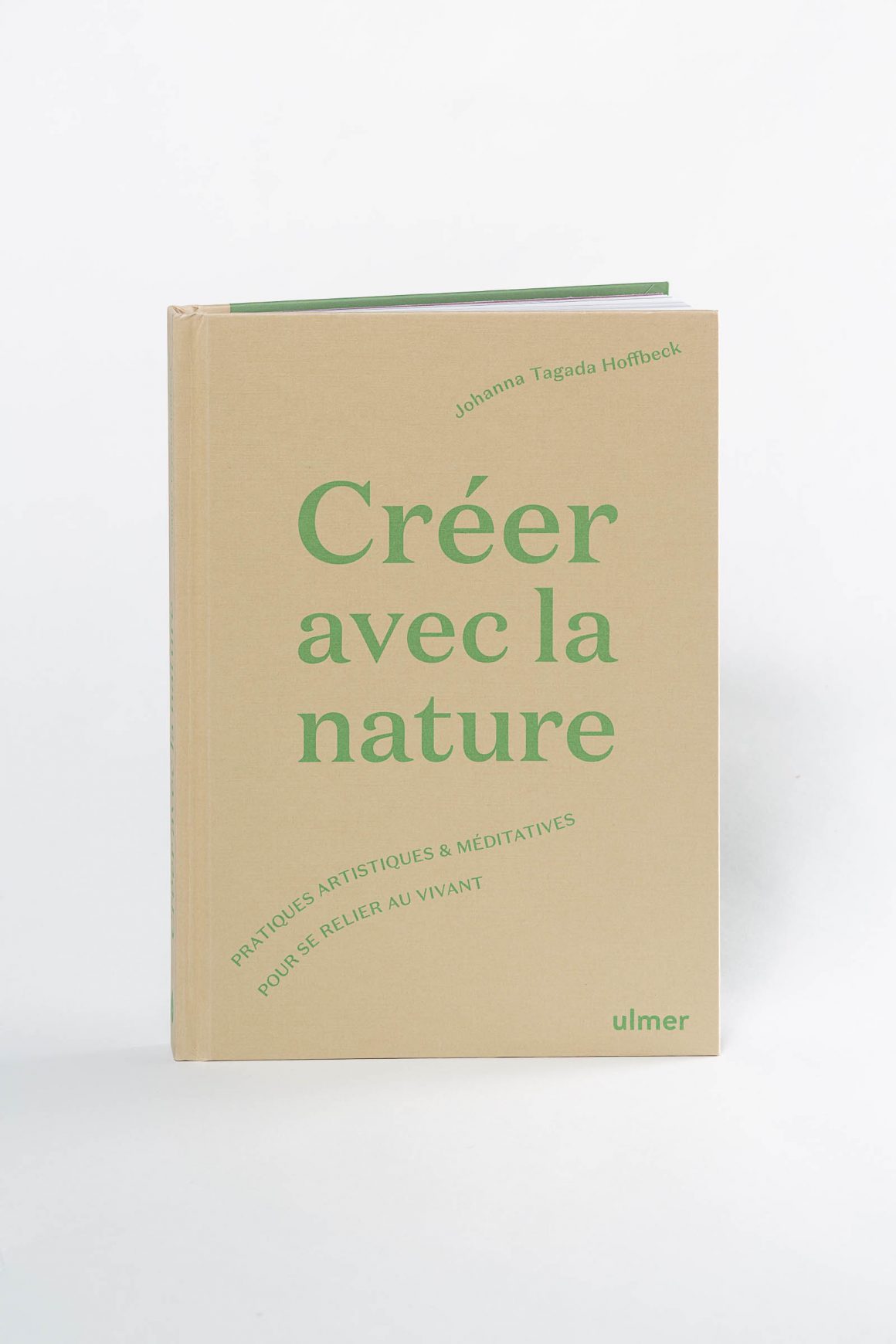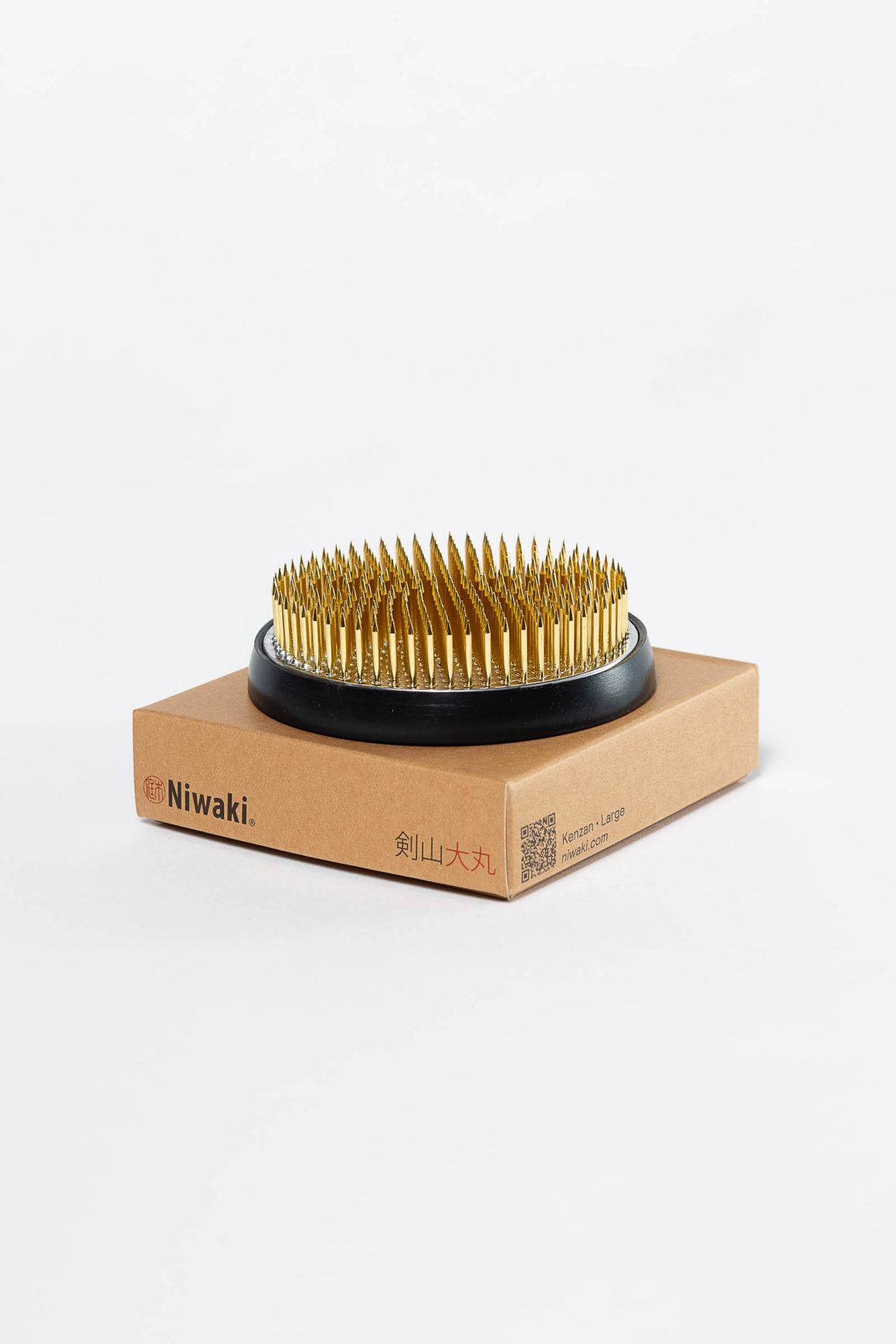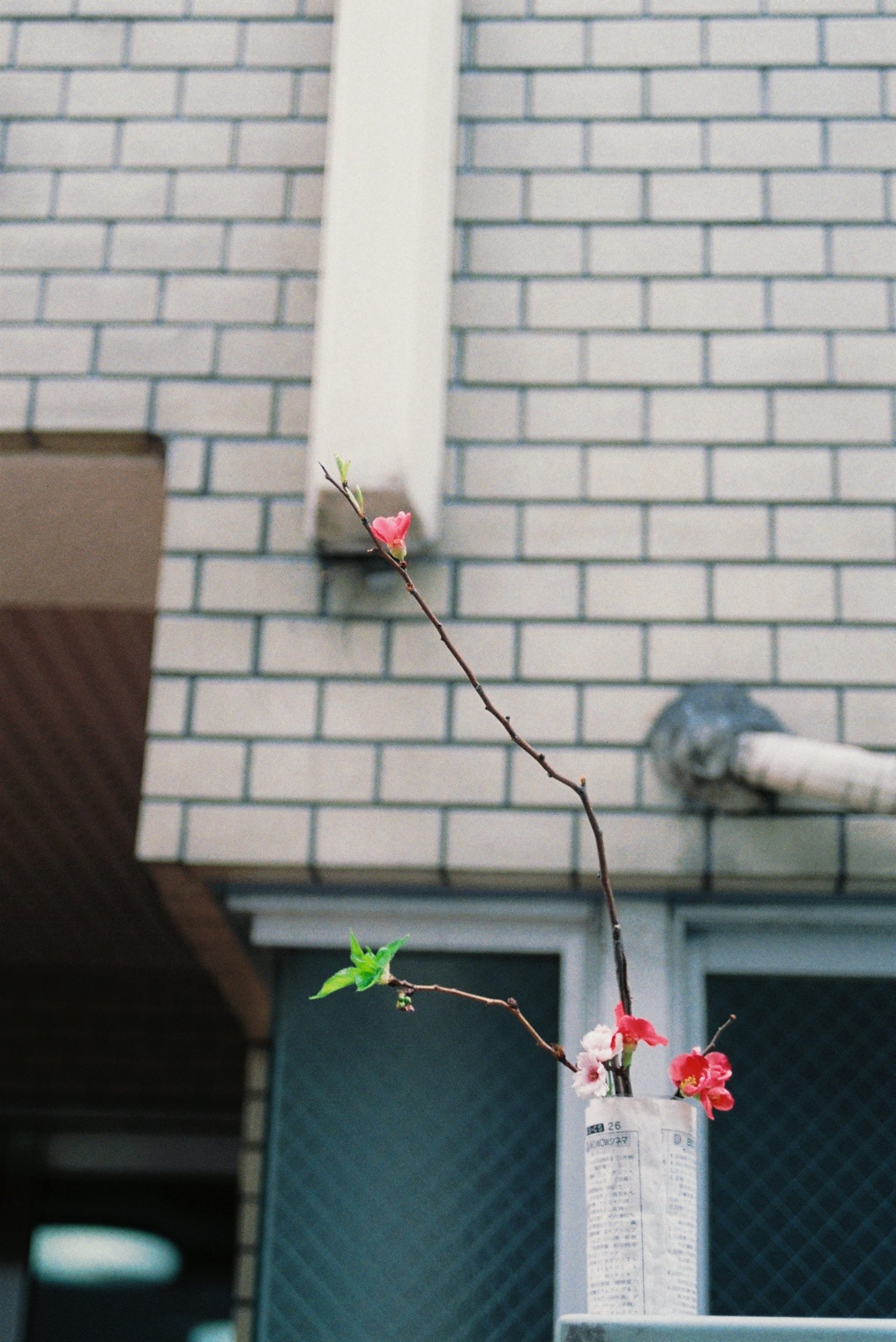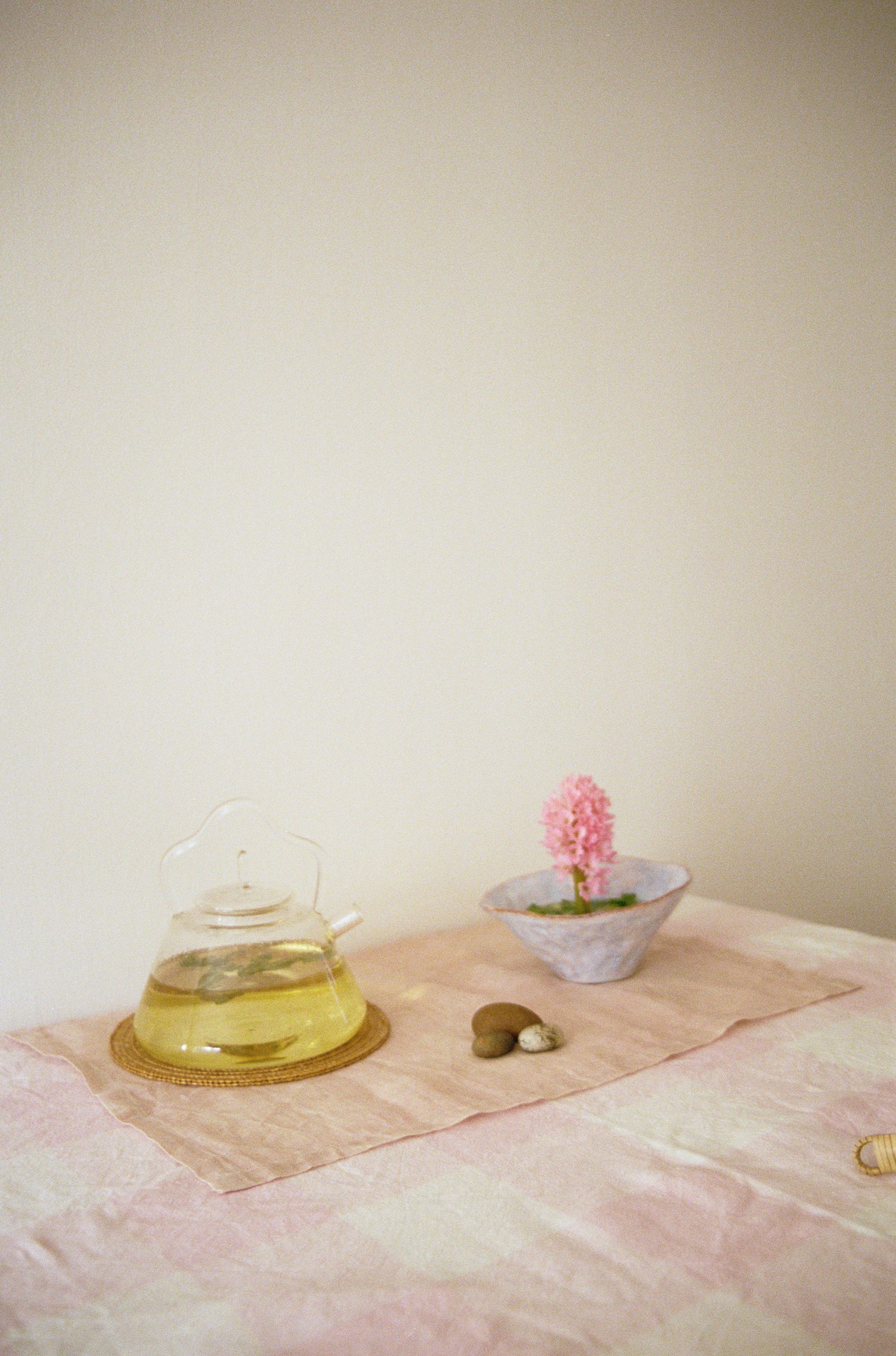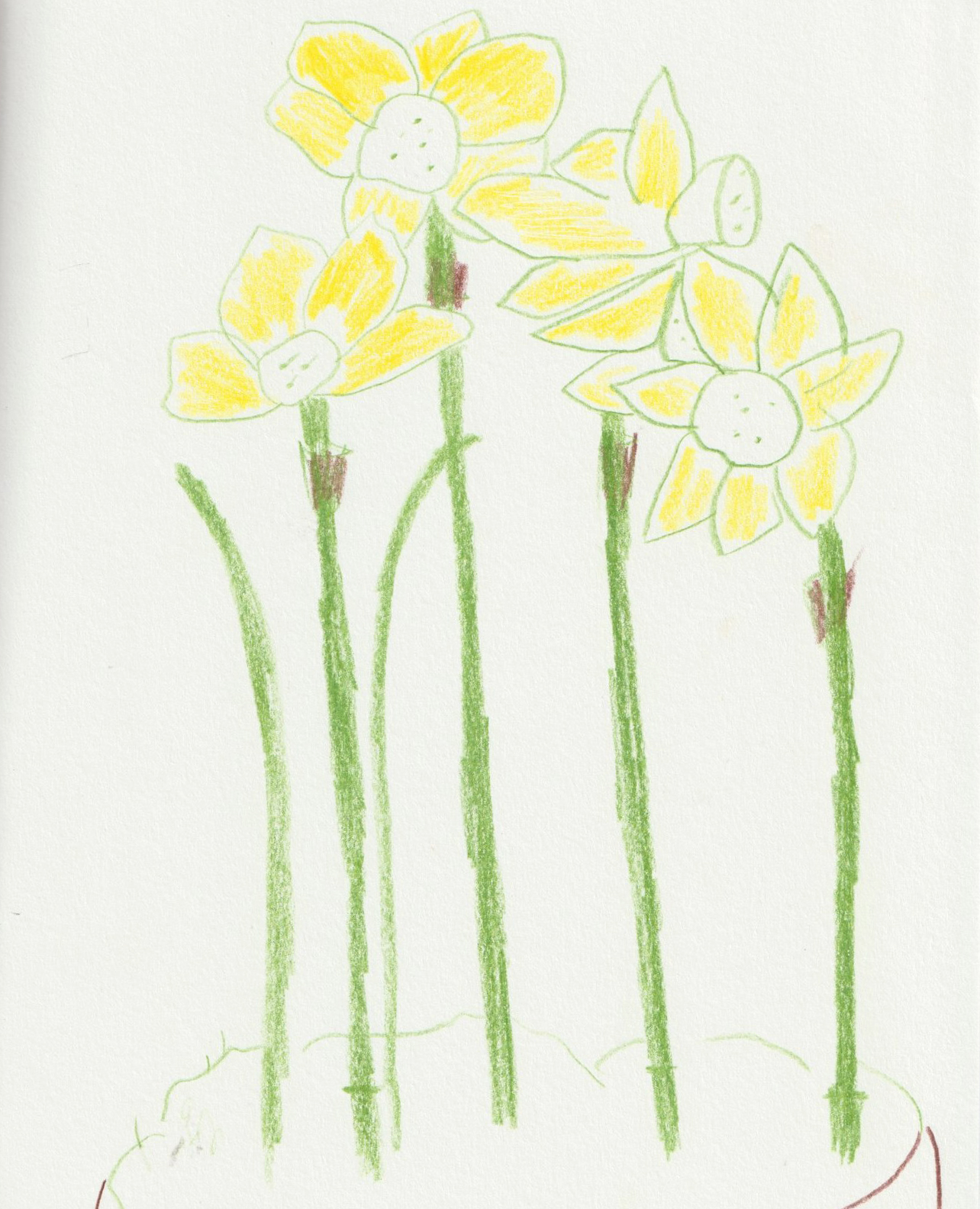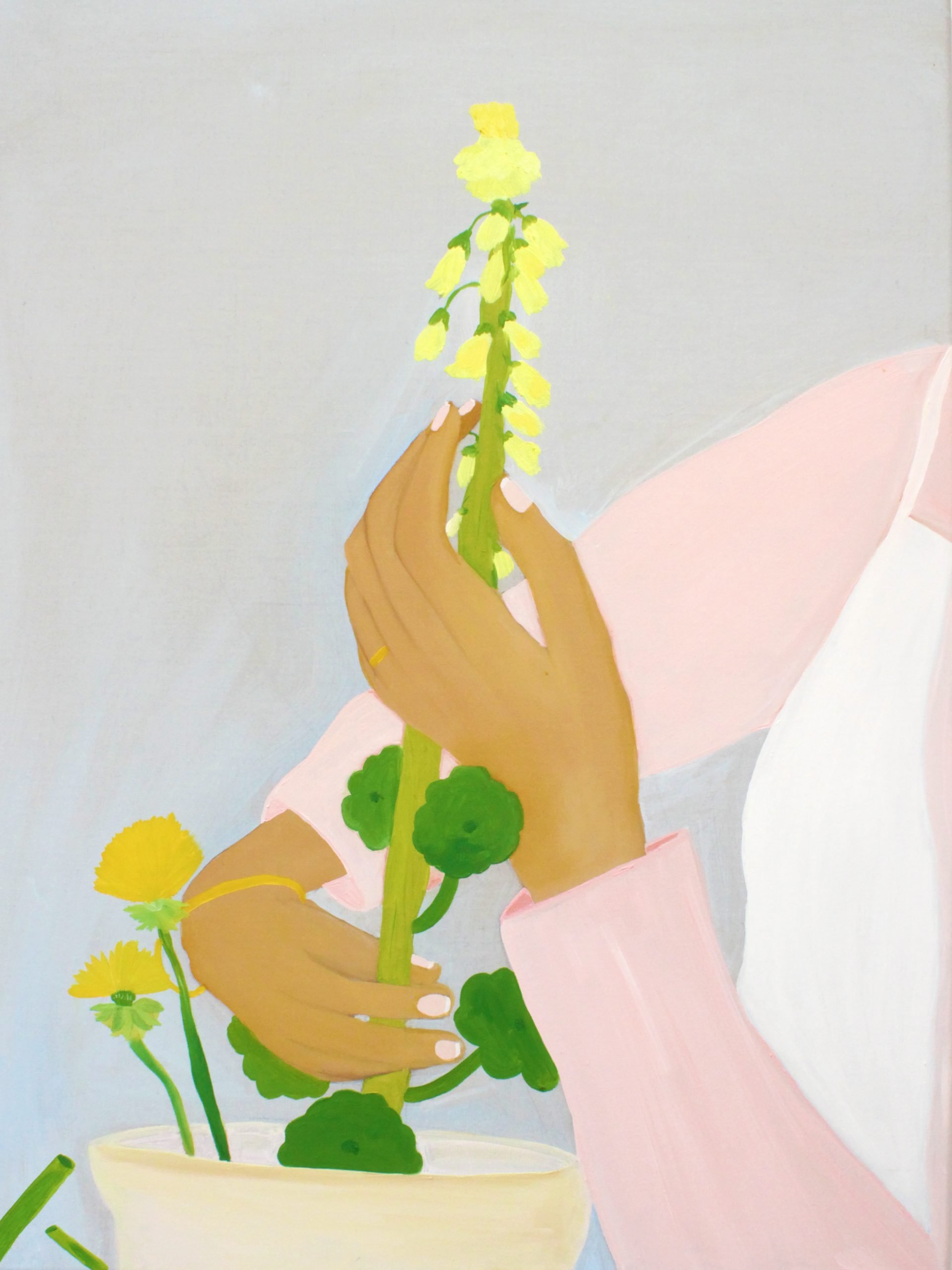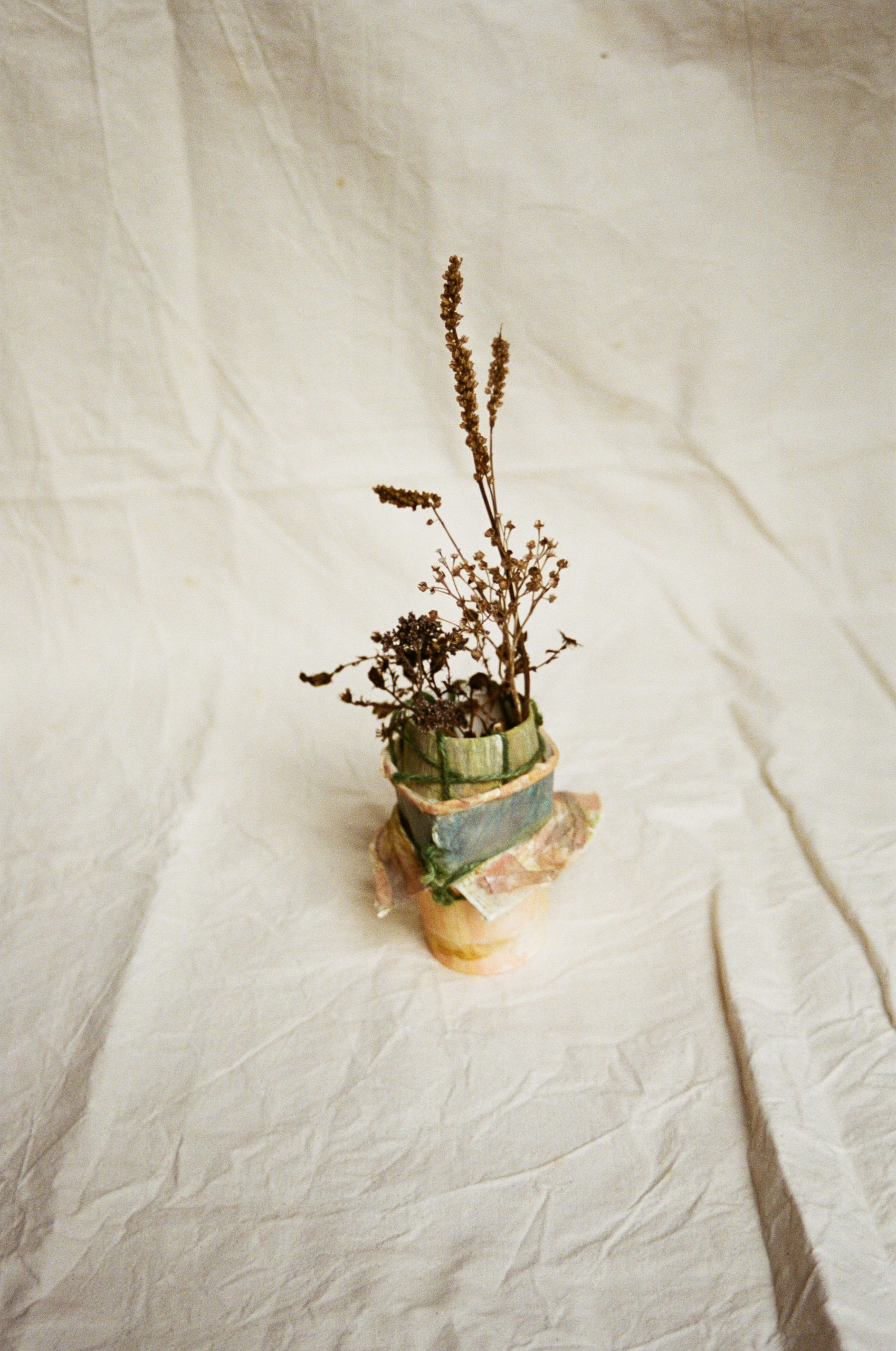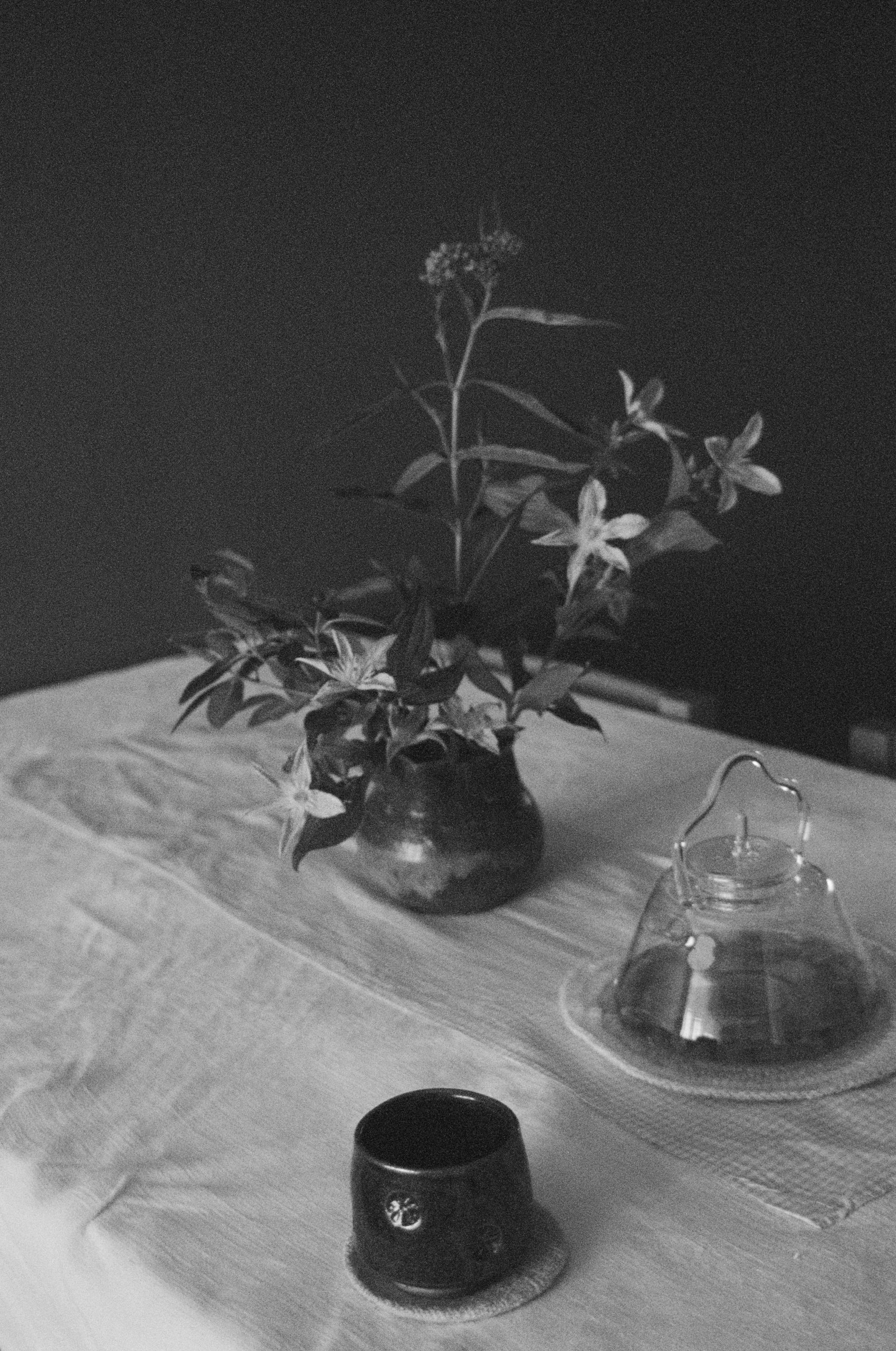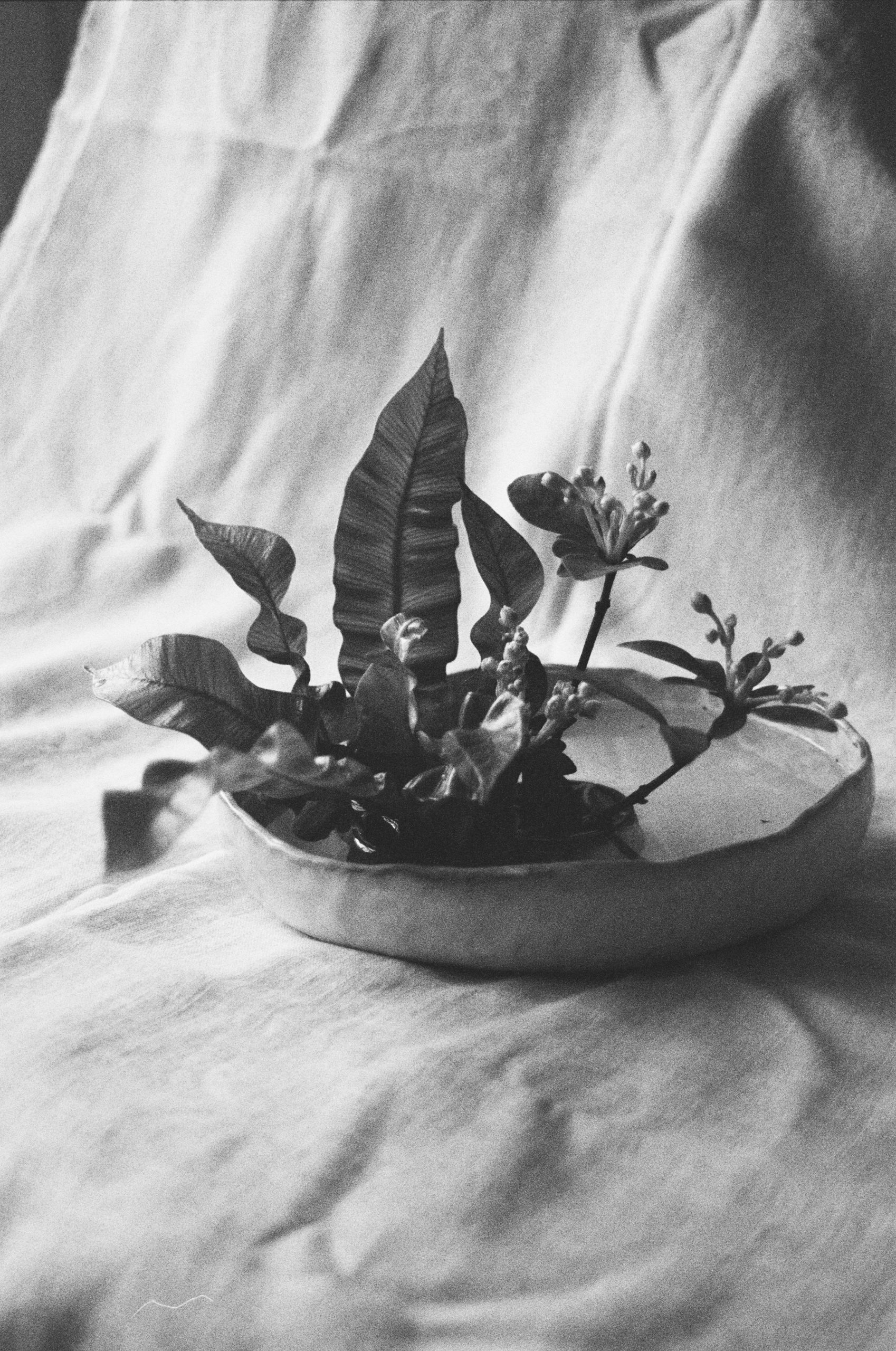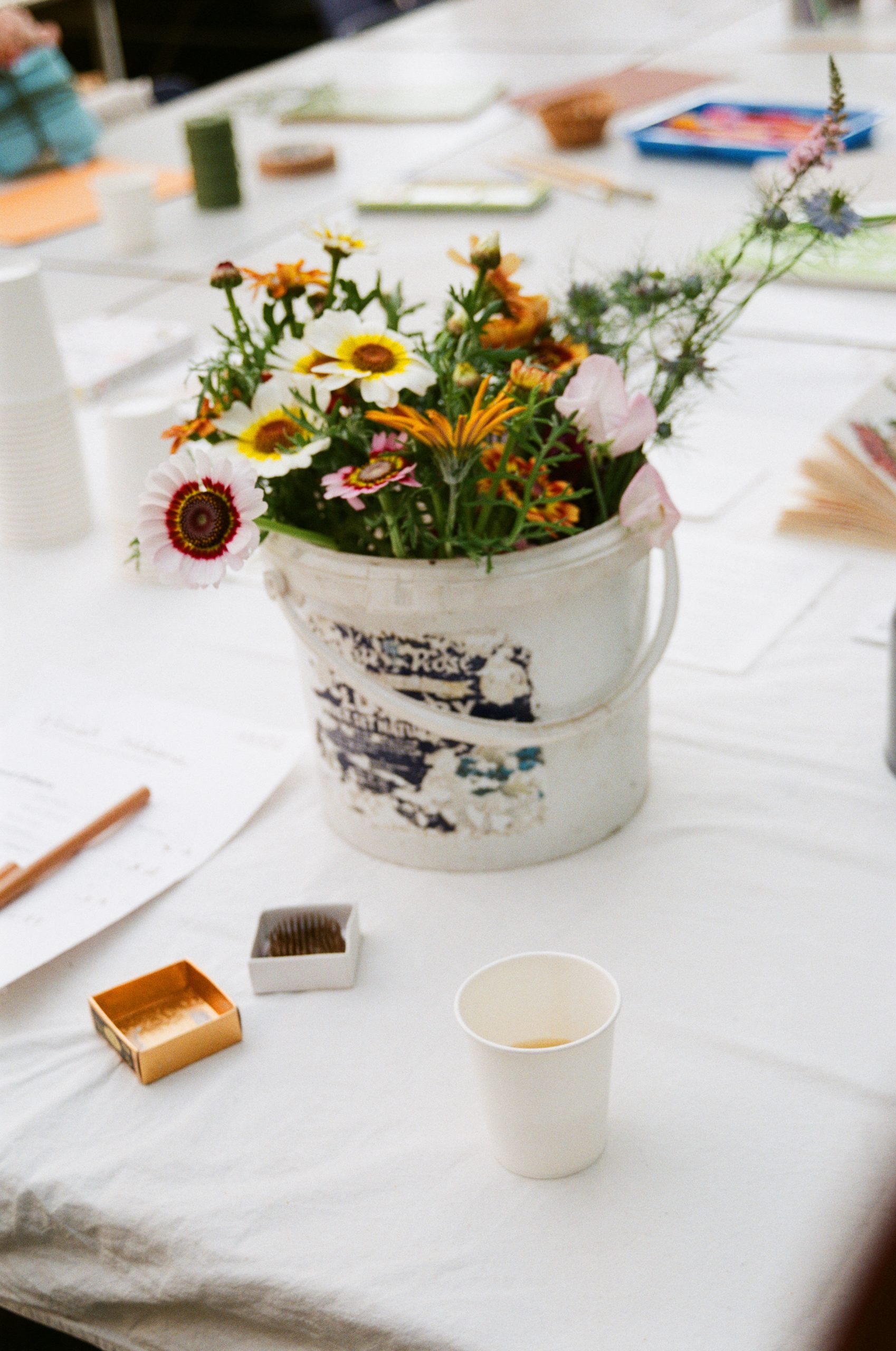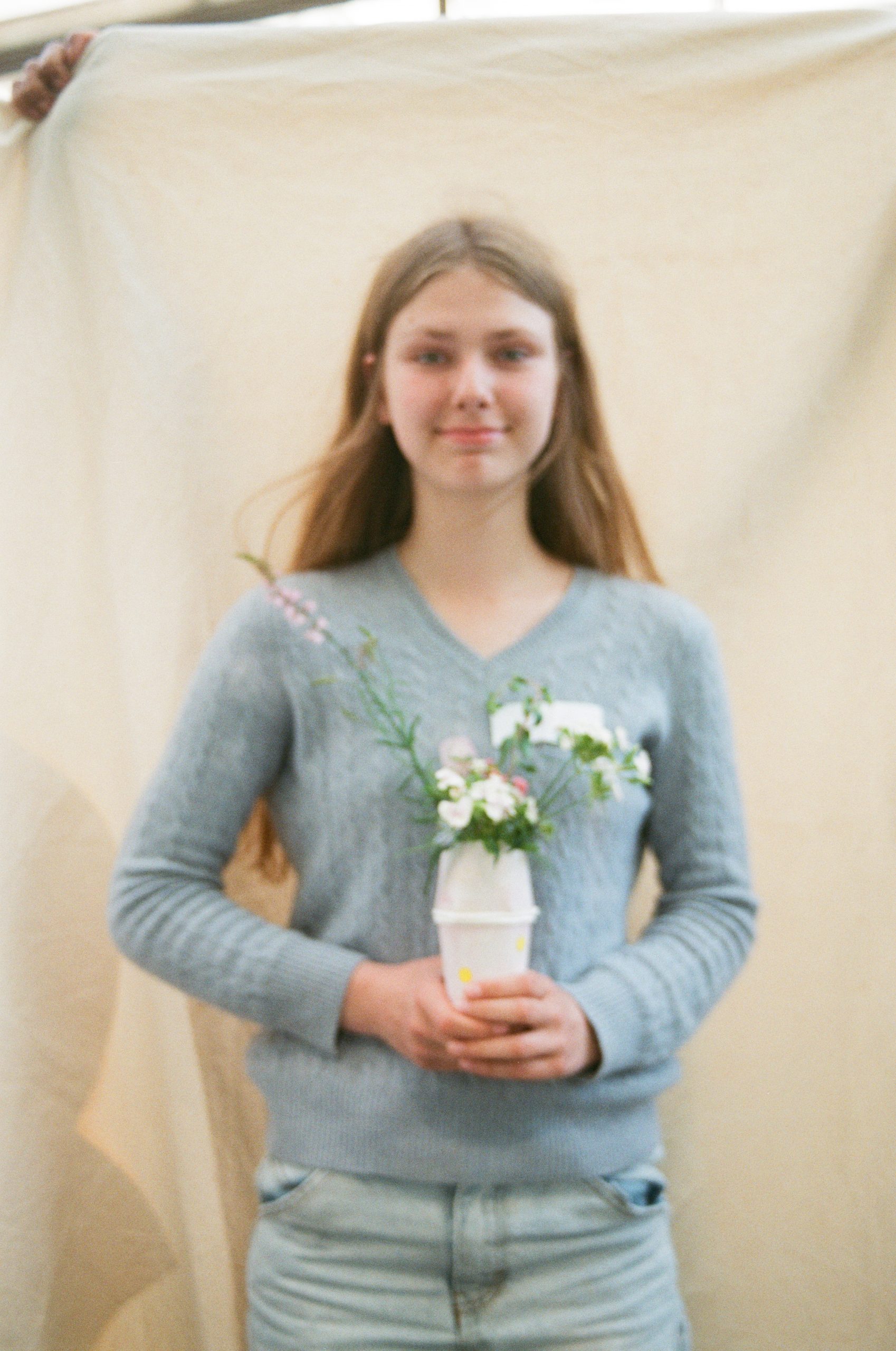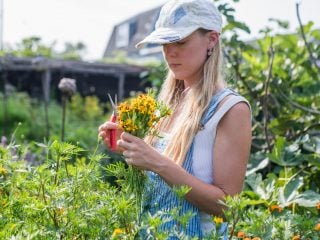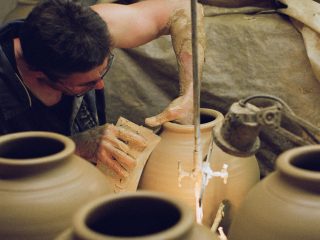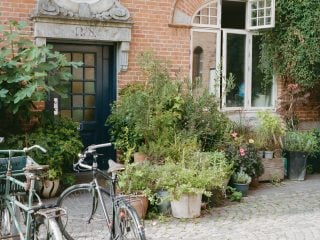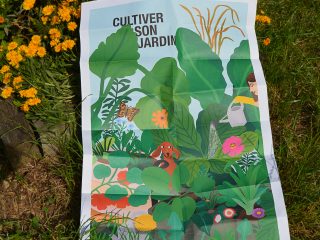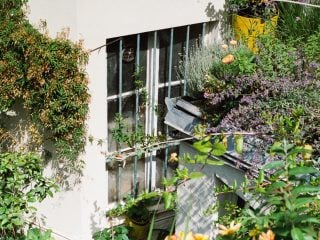Our Object Harvest selection now includes a Kenzan or 'flower frog' for creating floral arrangements, as well as the wonderful book Creating with Nature by transdisciplinary artist Johanna Tagada Hoffbeck (published by Ulmer). In her book, which combines art, deep ecology and spirituality, Johanna talks about her practice ofikebana – the traditional Japanese art of flower arranging – which means “making flowers come alive”. Here she shares an extract from her book and answers our questions, all illustrated with her paintings, sketches and photographs.
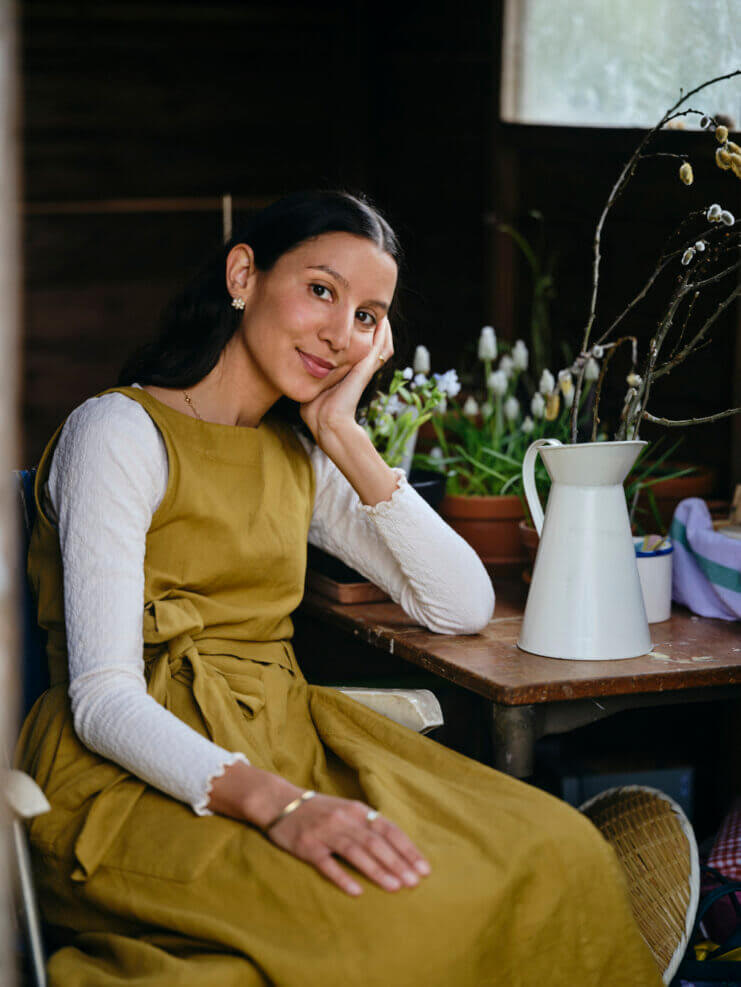
Extract from Creating with nature (Ulmer editions)
Chapter 6 - A MOMENT WITH A PLANT, Ikebana & painting
Another way of appreciating flowers is through the practice of ikebana, the ancient Japanese art of flower arranging. Ikebana was originally a form of spiritual devotion that traveled with Buddhism from China to Japan in the 6th th century. The tradition further developed during the Heian period (794-1185) before finding its current expression in the Muromachi period (1338-1573). In Japan, ikebana was initially a type of offering by Buddhist priests, and the first schools of ikebana began to appear thereafter, starting with the Ikenobō school. In ikebana, the resulting arrangement, which uses flowers and other plants, is created as a miniature landscape. Humanity, aesthetics and balance are part of the principles of ikebana, and the floral arrangements created are generally of a much more minimal aesthetic than Western-style ones.
Ikebana is rooted in a way of life, which is why it is also called "cadō"; as in "Chadō" (the way of tea), the suffix "dō" underlines the existence of a philosophy that is both subtle and elaborate. The rules for these floral arrangements are strict and fastidious, sometimes leading to ikebana being associated with austerity. Seasonal materials are encouraged and plants that are not at the peak of their blooming season can be used. What attracted me in particular to this approach was the fact that you can use plants that have already lived and retain traces and memories of that life, like little holes in a leaf.
Ikebana allows us to celebrate all of life's moments, from the first bud to the decaying leaf.
In 2018, I became a student of the English branch of Ohara-ryū, a school of ikebana founded in Japan in 1895. Ikebana helps me to perceive foliage and floral nuances in greater detail. As a painter, its practice develops my ability to see, and supports my understanding of negative space – the empty spaces in the composition of a work of art. As well as the flowers, I like to capture the hands of my teachers and classmates twirling around the plants, the natural light illuminating the table and the scattered tools.
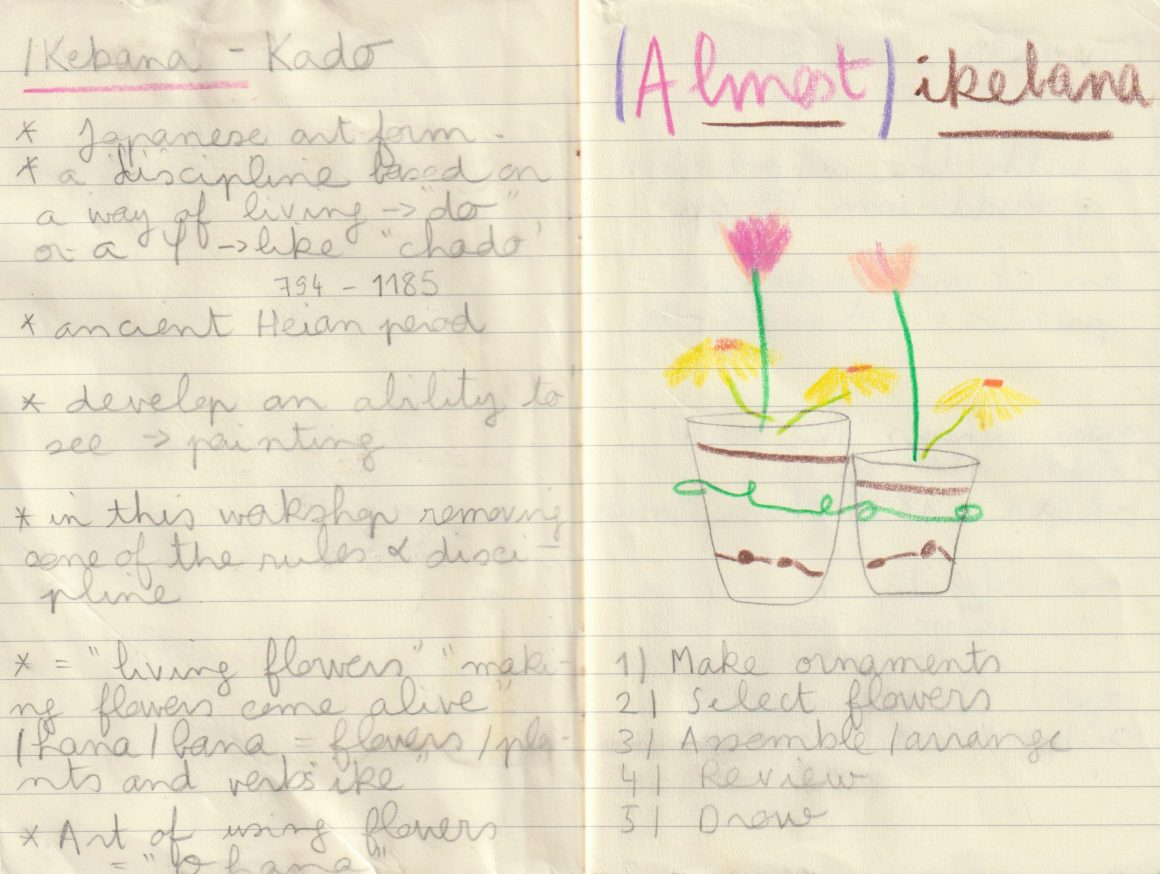

Most of the people in the studio are middle-aged or older women, because while 'ikebana' may seem popular on social networks, it's not mainstream enough for younger adults to study. Spending time with my teacher and other students is like a journey – sharing memories of gardens, their Japan, fun and laughter, discussing the beauty of this or that teacher and constructive criticism of a lesson arrangement – all while developing more discipline and precision. Each lesson is a strange and delightful mix where the nature of each being is present as well.
I have many years of study ahead of me until I become a certified ikebana teacher. For now, with The Gardening Drawing Club, I respectfully lead a (free) workshop called (Almost) Ikebana. It's a light-hearted and fun version of an ikebana arrangement, with just a few rules to follow (or not), where you can practice using a less intimidating technique, focusing on seasonal and local materials sourced from English organic farms or grown on my own plots.
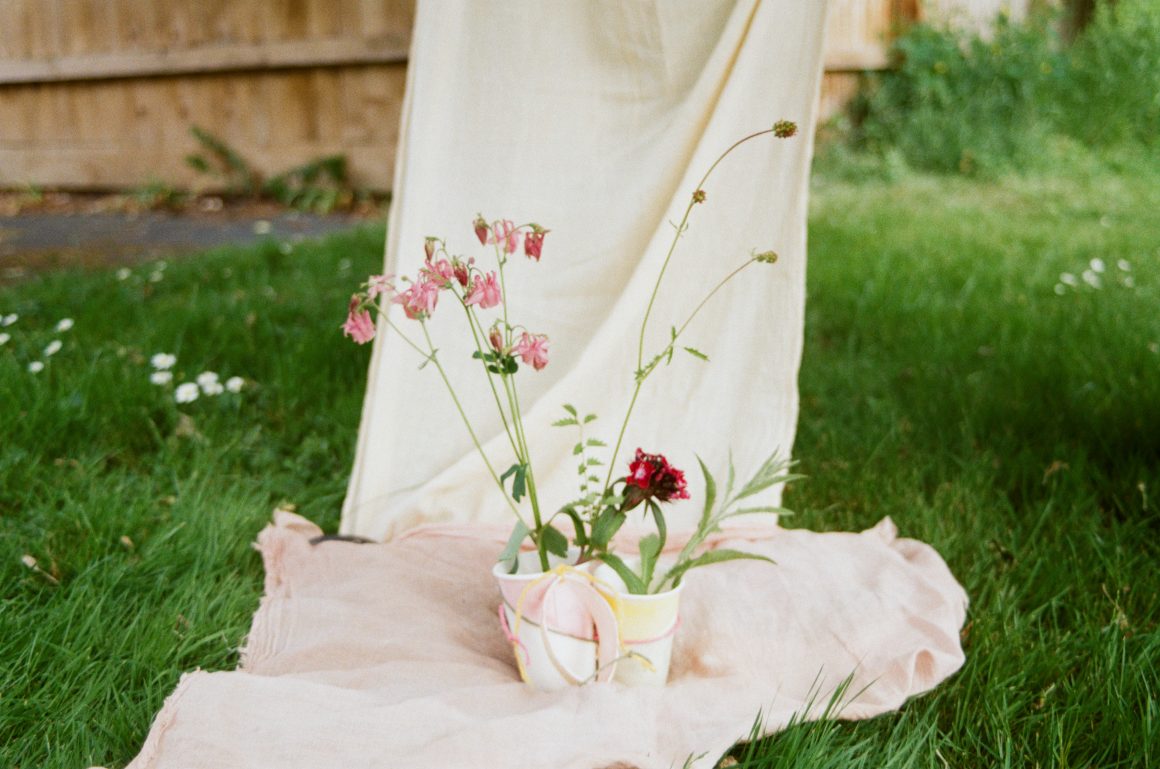
Two questions to Johanna Tagada Hoffbeck
Hello Johanna 👋 Of Alsatian origin and after many years in London, you now live in a rural corner of Oxfordshire (UK). In parallel with your artistic projects, you continue to train in the practice of Ikebana within the English branch of the Ohara school. Can you describe its spirit and how you cultivate this art on a daily basis?
— The Ohara school is one of the largest and is known as one of the major schools in Ikebana, both in Japan and internationally. This is also why I am able to study its curriculum while not living in Japan. Its focus, from my understanding, is to arrange plants as they would be in nature; in contrast, it is quite different to the Sogetsu School (founded in 1927), which employs methods such as plating, etc. things which more clearly indicate the involvement of a human hand and also deeply reflects the personality of the arranger.
I am sharing some photographs of arrangements I made at home in spring and autumn. Although I study ikebana, when I arrange flowers and leaves for us at home, I don't plan to execute a 'style', and it is a good way for me to observe what I have absorbed and how this practice, slowly, very gently, becomes part of the way I compose. At times, I make arrangements outdoors, feeling the sun, the wind and drops of rain and without thinking too much, influenced by a style but not being too harsh on myself about respecting all the rules nor aiming to compose an artwork.
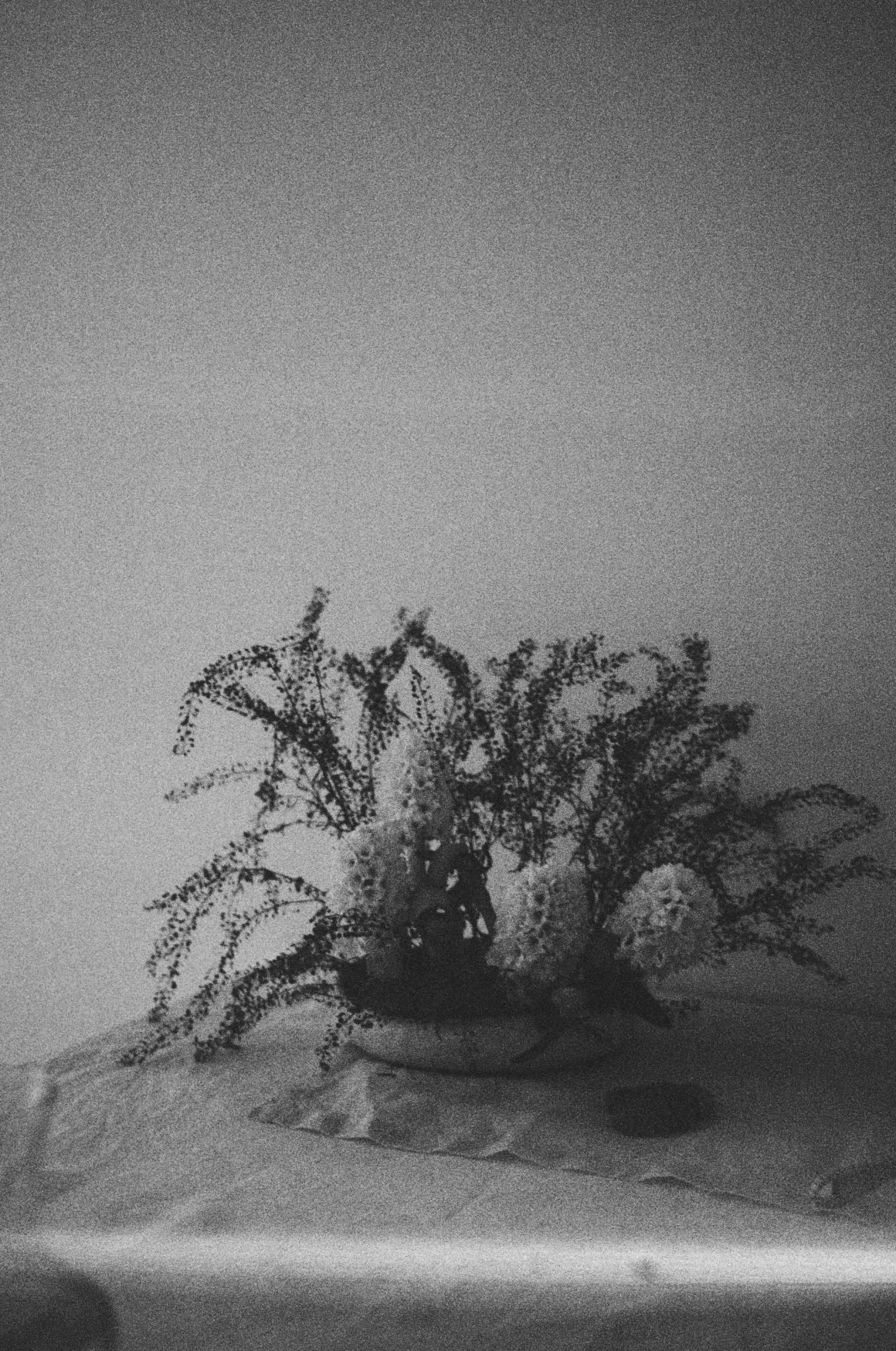
— In 2021, you founded The Gardening Drawing Club, a series of free workshops open to all - young and old - in order to initiate a dialogue around art and horticulture. One of them is called (Almost) an Ikebana. How did you think about both the approach and the format of this workshop?
— I noticed that the term 'ikebana' and the aesthetics of 'Ikebana ' are quite popular via social media. Yet, in the class I attend, I meet very few people under fifty. Most of the friends I invited to the lesson held by the Ohara Chapter decided not to pursue Ikebana studies after one lesson, in good part because the rules - all the numbers of stems, flowers, angles to consider, etc.- made arranging too 'calculate' and not necessarily pleasurable. Yet, I wanted more people to have the opportunity to connect with Ikebana and have a joyful, fun and equally meditative moment in their often busy lives. I wish to help people engage with Ikebana's rich values and profound beauty, which I appreciate, such as arranging with local, seasonal, and lived material.
So I thought about this workshop in 2021, where one is immersed in a garden, a season, drinks tea, starts to compose a vessel using paper cups and draws, paints with plant-based pigments and then arranges local flowers, following or not the principles of the arrangement Ohara Ikebana style known as the Rising Form ('Tateru Katachi' in Japanese) which I share during the workshop. This is why it is ‘(Almost) Ikebana’! I am constantly in awe of what participants compose and adore photographing their pieces. Arrangements and paintings they all take home.
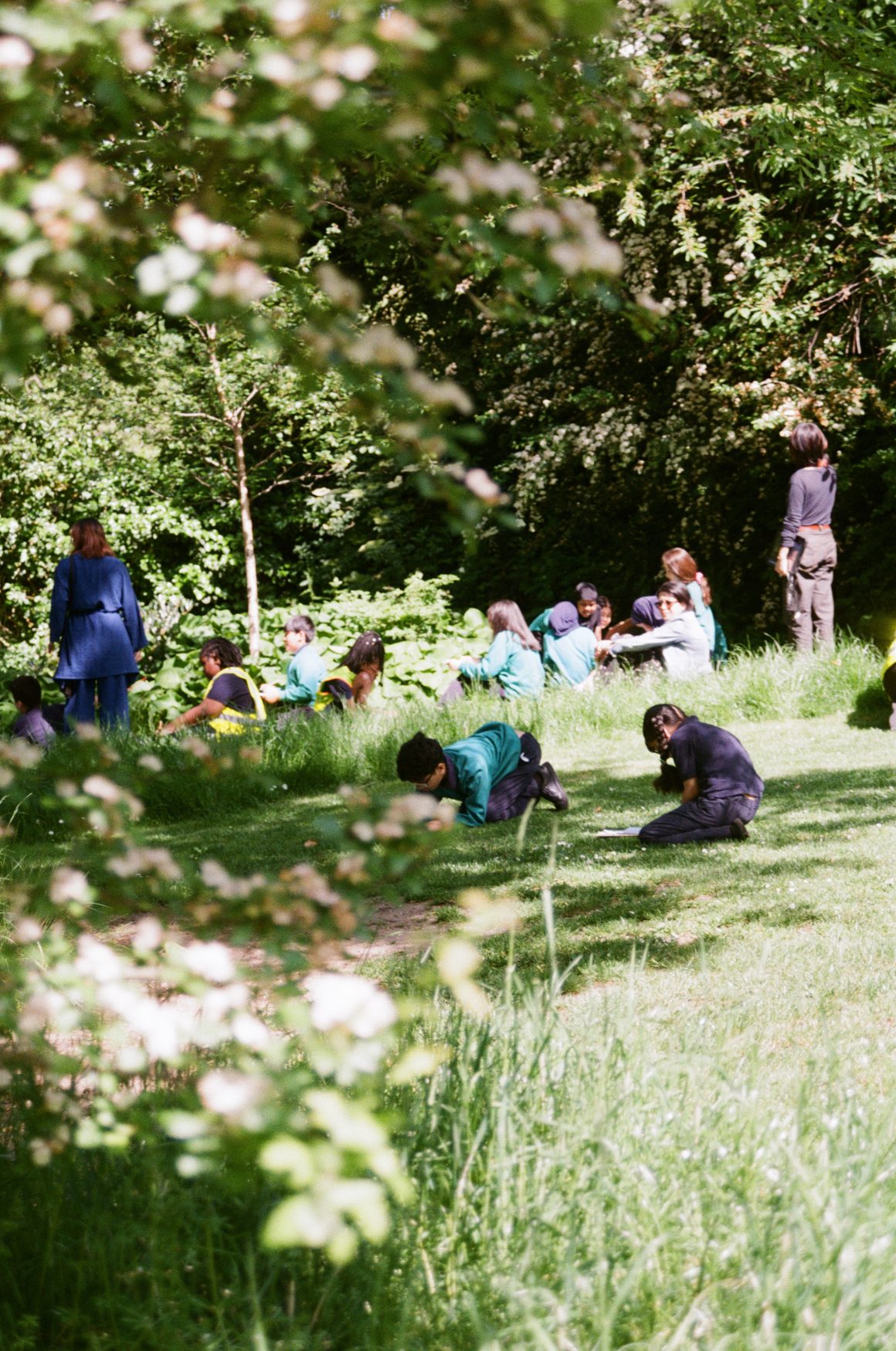
To follow the accounts of Johanna Tagada Hoffbeck and the Gardening Drawing Club:
www.instagram.com/johannatagada/
www.instagram.com/thegardeningdrawingclub/
www.youtube.com/channel/UC2LWeOrGOnaGW0BlsYn5wLA
